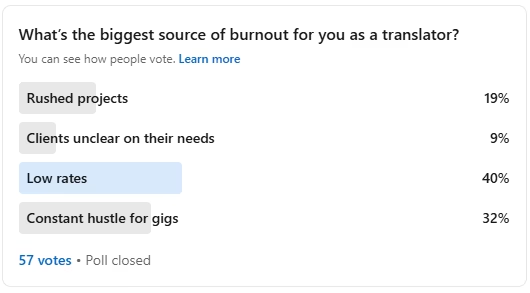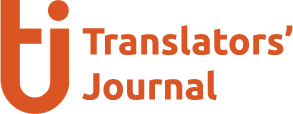For professional translators, freelancing no longer carries the promise it once did. It feels tougher than ever for translators.
Many feel squeezed by low rates, machine translation post-editing (MTPE) tasks, and inconsistent project flow. Even translators with decades of experience are questioning whether freelancing is sustainable in today’s market.
But zoom out for a second: the freelancing picture in other industries tells a different story.
Freelancing Is Thriving Across Industries
According to the Upwork Freelancing Stats 2025, freelancing as a whole is thriving.
- Freelancers generated $1.5 trillion in 2024 across sectors.
- Executives are increasingly hiring freelancers for agility, cost savings, and access to specialized talent.
- By 2027, freelancers are projected to make up more than half of the U.S. workforce.
This contrast matters.
If freelancing is booming elsewhere, maybe the issue isn’t freelancing itself but how translators are positioned within it.
That’s why instead of asking whether freelancing is “dead” for translators, we should be asking: what can translators borrow from the broader freelance economy to make it work for them?
Want practical tips, insights, and resources to thrive as a translator? Subscribe to Journaled, our free weekly email newsletter, and get them delivered straight to your inbox.
Why Some Translators Feel Like Quitting Freelancing
Freelancing no longer feels like freedom for many translators. The challenges are real:
- Rise of MTPE jobs – Agencies push translators into low-paying editing tasks.
- Undervaluing human translation – The worth of skilled translators is often ignored.
- Burnout from constant marketing – Finding projects requires endless networking and visibility.
- Over-reliance on agencies – Translators are treated as replaceable cogs, often with unfair pricing.
- Misconceptions about AI – Sensational headlines about machine translation make some consider quitting prematurely.

These frustrations are more than abstract complaints—they show up in community feedback. In a recent Translators’ Journal LinkedIn poll:
- 40% of translators cited low rates as the main source of burnout.
- 32% struggled with the constant hustle for gigs.
The takeaway is clear: low pay and unstable workflows weigh heavily, driving many translators to wonder—is freelancing worth it?
The Reality of Translation Industry: It’s Not Dying, It’s Transforming
Translation work is not disappearing. Instead, it is reshaping around technology and specialization.
- Multilingual communication is essential – Businesses, governments, and NGOs rely on it daily.
- AI and MT are rising – But human translators remain vital for nuance, creativity, and accuracy.
- The old freelancing model is shrinking – Waiting for two agencies to send projects is no longer enough.
- Specialized niches are growing – Legal, medical, technical, and creative translation command higher rates.
- Adaptability is key – Translators who evolve with tools and market shifts will thrive.
Should You Quit Freelancing—or Rethink It?
The decision depends on your goals. Sometimes the issue is not freelancing itself but how it is approached. Ask yourself:
- Do you want to translate, or run a business? Freelancing requires both.
- Is your frustration temporary or structural? Are you burned out, or is freelancing itself unsustainable for you?
- Do you prefer stability? An in-house role may fit better.
- Can you evolve instead of quitting? Hybrid paths are possible: part employee, part freelancer, or translator + content creator.
Practical Steps Before You “Blow It All Up”
Before making a drastic change, test smaller adjustments. These experiments can reveal whether freelancing is still viable for you.
- Keep agency clients as a safety net while exploring new options.
- Run a 30-day marketing sprint to expand beyond your current pool.
- Apply to 50 new agencies in a month to reduce dependency.
- Focus on small wins—even one new client can shift momentum.
- Follow the “Action Relieves Anxiety” principle – progress comes from taking steps, not overthinking.
Finding Direct Clients Without Overwhelm
Direct work builds independence and reduces reliance on agencies. Direct clients are often the best path to better pay and autonomy. Start small.
- Target businesses outside the translation industry – marketing firms, law practices, credential evaluators.
- Keep outreach simple – a short, professional email is enough.
- Set one clear goal – secure one new direct client by year’s end.
- Expand gradually – don’t try to overhaul your client base overnight.
Alternatives to Freelancing in Translation
Freelancing is not the only way to stay in the language industry. These options can provide stability while using your translation expertise.
- In-house roles in translation or localization.
- Project management or vendor coordination at language service providers.
- Corporate communication roles with multilingual responsibilities.
- Education and training – teaching translation or creating language-learning content.
- Adjacent industries such as copywriting, SEO, transcreation, or UX writing.
Curious what other translators are considering? Join our LinkedIn poll to share your thoughts and see how peers are navigating the shift away from traditional freelancing. Even if the poll is closed, feel free to comment and share your perspective—we’d love to hear your approach.
Even when you’re focused on freelancing, it’s smart to keep an eye on alternative paths—like in-house translation, project management, or vendor coordination. Weekly Job Window keeps you in the loop with curated jobs and industry trends, so you know what opportunities exist and can stay prepared for the shifts in the language market. Subscribe here!
Evolve Before You Quit
Asking “Should I quit freelancing as a translator?” is valid. Freelancing is harder today than it was ten years ago.
But translation itself is not disappearing. The profession is changing, and those who adapt can still build fulfilling, sustainable careers.
- If freelancing drains you, it’s okay to step away.
- If you still love translation, explore evolution before quitting.
- If stability matters most, in-house or hybrid roles may fit better.
The future of translation belongs to professionals who are flexible, creative, and open to new paths.
Want a weekly digest from Translators’ Journal in your inbox?
The best insights, highlights, and takeaways for professional translators.
One email. Once a week.



